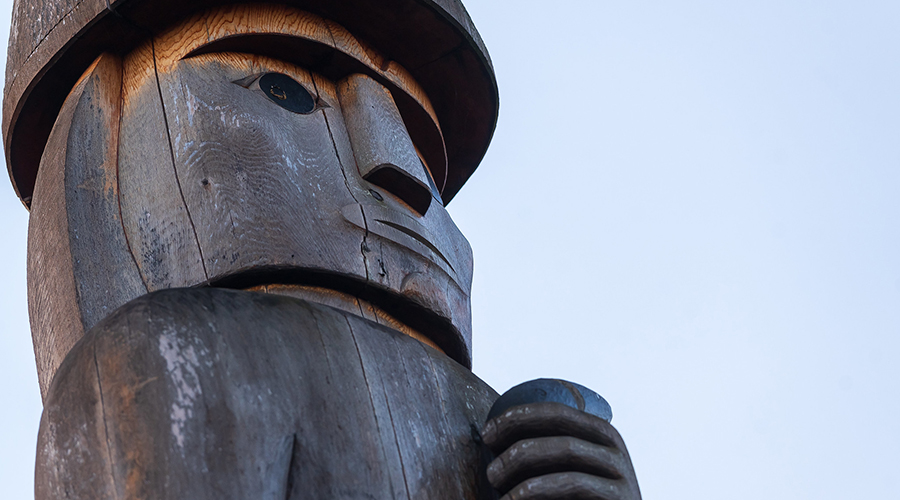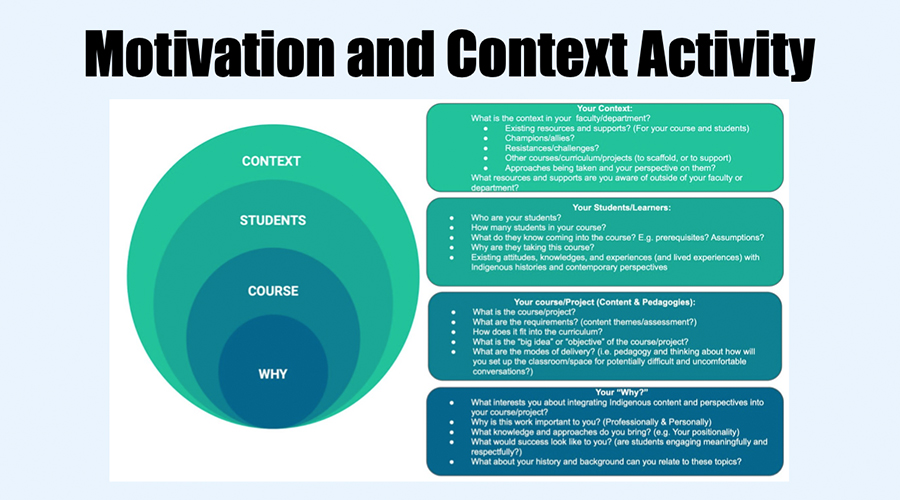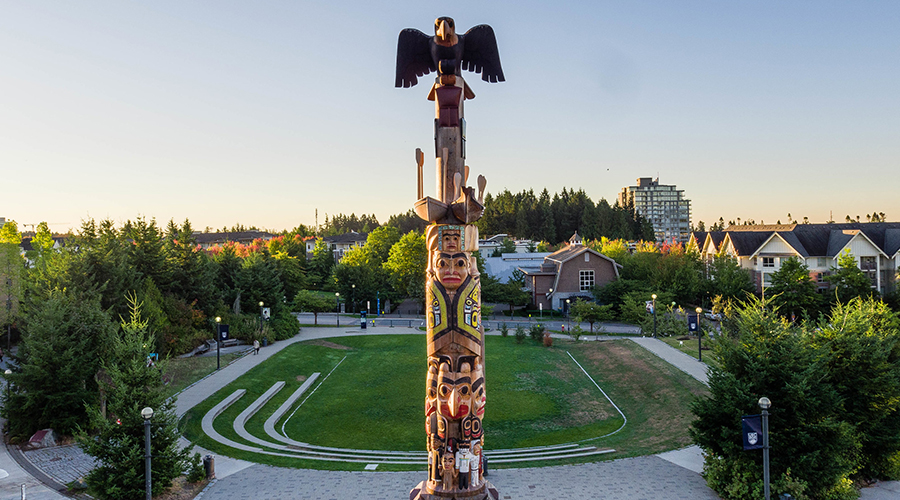The Truth and Reconciliation Commission of Canada’s Calls to Action (TRC) (PDF) encourages organizations and individuals alike to take responsibility and work together to change policies and programs. It requires a concerted effort to acknowledge and repair harms caused by colonization and to move forward with reconciliation. UBC has committed to advancing reconciliation and Indigenous engagement in its Strategic Plan, which aligns with the UBC’s Indigenous Strategic Plan. The 2020 ISP sets a series of goals and actions the university and its community members will take collectively to advance this vision. UBC President Santa Ono has stated, “implementing this Plan will take hard work and the resolve of all members of the UBC community at every level.” Calls to change curriculum and pedagogy in support of Indigenous strategic goals invite the UBC teaching and learning community to take part in this process. In responding to reflections and recognizing the need for change, there has been a growing momentum among faculty to take steps to Indigenize their course content, including in areas where connecting Indigenous knowledges, history, and scholarly contribution have been underrepresented—or worse, considered irrelevant.
Bringing Indigenous perspectives to STEM
For many who are in the beginning stages of the process, the concept of Indigenizing curriculum often starts—and, for some, ends—with a land acknowledgement. Yet, looking beyond this important first step reveals a limited representation of Indigenous knowledges, especially in Science, Technology, Engineering and Math (STEM) fields.

Jackie Chambers, teaching & learning manager at the Beaty Biodiversity Museum is well aware of this deficiency. “I often hear this assumption from other STEM colleagues: ‘It’s great for someone involved in education and outreach to do this, but it doesn’t really apply to my discipline ’”
“In general, I would say the main topics covered in the courses are very standard European-type of knowledge content. It’s definitely a very colonized perspective,” explains Dr. Carolina Tropini, assistant professor in Microbiology and Immunology at the School of Biomedical Engineering.
Jackie echoes this sentiment and sees similarity in her environment. “In the museum world, there is an understanding that the history of museums is often tied to colonialism, we can’t deny that history.”
Yet, as Dr. Maggie Low, assistant professor at the School of Community and Regional Planning and co-chair of the Indigenous Community Planning program, explains, there are many STEM courses and projects that would benefit from including more Indigenous perspectives. “So much of the work that planning is and planners do—whether it’s community building, health care, education and more—is tied to this work, because all community planning in Canada happens on Indigenous lands.”
It is clear that many UBC instructors, in STEM and other disciplines, want to learn more about Indigenous perspectives and include them in their programs. To encourage this effort, the Indigenous Initiatives (II) team at the Centre for Teaching, Learning and Technology at UBC Vancouver created the II Design Series as a three-part professional development workshop.
Since it was first offered in 2017, the II Design Series has guided faculty members who want to learn how to integrate Indigenous content into their course design and gain pedagogical skills to work with Indigenous and socially contentious topics in the classroom. This is done through a set of three exploratory workshops, focused on introducing some existing learning resources, surfacing key questions around place and positionality, and opening space for mutual feedback and support.
“Once I heard about the Design Series I knew I wanted to take it,” Jackie remembers. “It appealed to me because I thought it would be an opportunity to talk to facilitators from the II team and other participants who were in the same boat as me. We all wanted to do something, but we weren’t quite sure where to start.”
From considering their own motivations and interests for integrating Indigenous perspectives, to reflecting on their positionality and meeting with the II Learning Community program alumni, the II Design Series takes participants on a transformative learning journey.
Carolina attended the Series to address a challenge she had in one of her courses. “I was really wondering where Indigenous perspectives would fit into a topic like fluid mechanics, but had no idea where to start. I kept thinking, ‘Where’s my thread?’”
When she signed up for the workshops, Jackie was part of a team working on an exhibition about the geological and biological history of the Earth, exploring the forces that came together to make our planet able to sustain life. “Since the focus of this installation was on origin stories, I thought this could be an interesting place to introduce Indigenous perspectives, so I went in with that goal.”
Little did they know that the course would impact them well beyond their initial objectives.

Finding a thread and changing perspectives
The II Design Series helps instructors who are newer to Indigenous knowledges get comfortable talking about and introducing this content in their programs. It also supports those who are already knowledgeable about reconciliation and Indigenous research to develop effective pedagogical practices for student learning.
When addressing the concept of land in one of her classes, Maggie created an assignment directly inspired by the II Design Series. “I asked students to think of a place that has a lot of meaning to them, to research the Indigenous history of that place, and to present it in any format they liked – video, murals, poems, etc. Some of the assignments have been so moving and beautiful.”
Another objective of the II Design Series is for instructors to acquire tools and resources they can use for preparing and teaching their classes.
“In one of the courses, we developed a mapping exercise that helps with framing the context of your positionality regarding Indigenous perspectives,” Carolina describes. “I can go through it, check off what I do and don’t know, and identify which topics I can reach out on to other people, who can help me fill in the gaps. I printed out the exercise and use it in my courses now.”

The workshop series is paced to give instructors enough time to reflect on their teaching between sessions and broaden their perspectives on where they fit in the greater context.
“I value the structure of the II Design Series because it gives you the time and space to think and reflect,” Jackie explains. “I think that it’s important because you are going to experience a mind shift. You will come to the workshops with one objective in mind, but you will soon realize that there is a much bigger way of thinking about this topic, and not just for the course you are teaching. That’s not going to happen after a 30-minute online course.”
Excitement and enthusiasm were apparent when discussing the impacts of the II Design Series with Carolina, Jackie and Maggie. And as Maggie explains, including Indigenous perspectives and approaches to knowledge into her course design resonated with students as well. “I think many students are quite excited that there is now a course they can take on the subject of reconciliation and planning and many of them want to bring in Indigenous perspectives. I received quite a few emails from students asking me for more resources and expressing their gratitude – even after the class—which is always nice to hear.”
Carolina’s students also welcomed using a more story-oriented approach to teaching and learning. “It steps aside from the hard physics and becomes a human story, which is very interesting to students.”
“The response has been incredibly positive,” echoes Jackie. I think people are extremely interested in this movement. There is a feeling among our visitors and students that this is the way forward.”
Drawing momentum from the community
Despite their best effort, it would be unlikely for one individual making concerted changes to have a long-lasting impact at a Faculty level. However, when everyone is moving in the same direction, a more noticeable shift can happen. To encourage this dynamic, in Summer 2020 the Indigenous Initiatives team developed a customized II Design program specifically for instructors in the Faculty of Applied Science, who took it together as a cohort in a blended synchronous and asynchronous online format.
Together, this program and the II Design Series at large have contributed to a wave of positive outcomes in STEM.

Great changes are coming in the School of Community and Regional Planning. Thanks to Maggie and her team’s effort to bring Indigenous perspectives front and centre, her course “PLAN 501—Reconciliation and Planning” is now part of the core curriculum. As a result, all students coming into the program will take the course, opening Indigenous perspectives to a wider audience. “This is a big step, but I also feel a great sense of responsibility to do all that work justice and make sure that I’m teaching it in a good way.”
Staff and faculty who have taken the II Design Series are also motivated to initiate and contribute to unit-level changes. Carolina mentioned that since finishing the course, she has been working with leadership in the School of Biomedical Engineering (SBME) to work through the ISP Self-Assignment Tool (PDF). This tool supports the practical implementation of the ISP’s goals and actions at the individual and faculty level and, as Carolina explains, has helped SBME to identify how they want their curriculum to evolve. “We are starting small,” Carolina details, “but one of the things that came up was making sure to include Indigenous topics from the perspective of the microbiome and microbiome engineering. The objective is to build individual story vignettes that would eventually make it into the main course.”
Since Jackie took part, the Beaty Biodiversity Museum decided, as a unit, to use the ISP Self-Assessment Tool to think about their current practice and about their plans for the years to come. “This is no longer me and my one program, thinking about one course. This is now a museum-wide undertaking, which is something I’m really excited about.”
Upon completion of the course, participants are invited to join the II Learning Community, a group of program alumni who support one another beyond the duration of the course. As members, they share their successes and challenges, exchange resources and continue to grow on their learning journeys.
“One of the most powerful things I took from the Design Series was to connect with the facilitators and other participants on campus who are trying to do similar things.” explains Jackie. Everybody is coming from different departments, everyone comes with good intentions. We all want to learn something, which I find really inspiring.”
More importantly, engaging with the II Learning Community is a humbling way to realize that everyone begins their journey differently. “One of the things we talked about during the Design Series was this idea of a spectrum,” Jackie continues. “People are on a spectrum as to where they are in thinking about Indigenous perspectives and what it means. That spectrum can range from inviting an Indigenous speaker to class, to engaging in a complete overhaul of a program.”
For Maggie, the community aspect is a crucial element in making her feel part of an ongoing movement. “Keeping these connections with the folks at II and the other participants is really important because I know I’m going to be doing this work for a very long time. When you are as passionate about the subject as I am, having support from people who are also in that mindset is extremely valuable.”
Now that the conversation has begun, Carolina, Jackie and Maggie are happy to see more and more examples of Indigenous perspectives included in STEM.
Looking at both their accomplishments and upcoming projects, all three instructors are happy to see positive change taking place, not only in STEM but at UBC as a whole. “I think we are working towards bringing Indigenous perspectives into most aspects of the work that we do. Not just in our programs, but as a university,” Maggie concludes. “I’m very hopeful, and I have been encouraged by my colleagues and the work we continue to do, together, on that journey.”
Carolina is already focused on her project’s next step. “I’m developing a class on how traditional microbiomes are correlated with better health outcomes. Industrialization has given rise to what we call industrialized diseases that strongly affected the health of Indigenous communities and has led to incidences of diabetes and obesity. I’m hoping to incorporate this perspective seamlessly into the course.”
Jackie hopes to continue sharing resources and collaborating with other colleagues across campus in amplifying Indigenous voices.“What I want is to have more of these interactions because they all help to lift each other up. It gives us a better sense of all the positive things that are happening on campus.”
CTLT Indigenous Initiatives has collaborated with STEM and Arts Faculties on customized offerings of the II Design Series. and typically programs an annual Series open to all faculty at least once a year. You may add your name to a list to learn about future offerings. You may also learn more about Equity, Diversity, Inclusion + Indigeneity (EDI.I) Initiatives in the Faculties of Applied Sciences and Land and Food Systems.